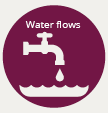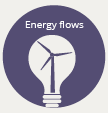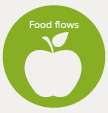While there is an urgent need to extend infrastructure networks, and rehabilitate existing infrastructure to address capacity limitations, the GCR already faces unsustainable demand for raw-materials, water, energy and food, as well as growth in the production of waste, sewerage and pollution. There are uncertainties around the availability of natural resources, such as water and land, and concerns about the cost of services as demand outstrips supply for key inputs such as energy. Faced with the intersecting challenges of demand for services and infrastructure, and unsustainable growth, understanding the nature of resources flows through the GCR and the associated infrastructure needed to carry those flows, is an ever-growing concern for government authorities.
The prospects for a detailed understanding of resource flows are challenged by a number of issues related to how public infrastructure data are recorded and collated. Insights from the GCRO’s Metabolic Flows and Infrastructure Transitions Project reveal limitations in the publicly accessible data on resource flows. Interrogation of these data indicates that there are further challenges in the extent to which governments in the GCR are able to fully comprehend the quantum of resource flows under their management.

A water flow assessment for the GCR requires data on the inflows, outflows and consumption of water. The flow of water from the natural system, via water transfer schemes, to bulk water providers and to municipal distribution networks is a crucial aspect of understanding the amount of water that flows through this chain.
Rand Water’s network consists of 3500km of large diameter pipeline, which feed into 58 reservoirs. Its customers include metropolitan and local municipalities as well as mines and industries situated in the GCR. RW is estimated to supply, on average, 3653 million litres of water to their customers daily. Bulk water supplied from Rand Water to municipalities is either managed through the municipalities themselves or through private companies.


The GCR has very little locally available coal, with commercial coal mining virtually ceasing in the province in the 20th century.* The main mining areas in South Africa are presently in the Witbank-Middelburg, Ermelo and Standerton-Secunda areas of Mpumalanga, Sasolburg-Vereeniging in the Free State/Gauteng and in north western KwaZulu-Natal.
The province relies entirely on imports of refined energy products such as petrol, diesel, residual fuel, oil, paraffin, jet fuel, aviation gasoline, and liquefied petroleum gas. There is no import of liquid or natural gas into Gauteng in their crude or unrefined forms. There is potential for some forms of renewable energy, particularly solar energy, to be more widely utilised in the province.
Understanding the extent to which these technologies are being utilised by different consumers in the GCR will require an in-depth, case specific investigation. Amongst other things, such a study must quantify the amount of energy savings by different types of users, since savings is an important element of flow analysis. Recently, Annegarn et al* estimated the total annual energy demand for Gauteng at 799 petajoules. While industry is generally a large energy user at a provincial level, the picture is totally different for the three main metropolitan municipalities (Johannesburg, Ekurhuleni and Tshwane), where transport is the largest energy consumer.
* Gauteng Department of Agriculture Environment and Conservation., 2008
* Annegarn et al. 2011


Food flows within the GCR are influenced by a number of variables including global commodity price fluctuations and changing climatic conditions. Factors such as population growth, income changes and urbanization patterns have created upward pressure on the demand for food generally, and certain types of food in particular, e.g. processed and meat-based meals in relation to the consumption of fresh fruit and vegetables. This has accelerated a growing dependency on food production from outside its borders to sustain growing urban appetites.*
Mirroring other urban regions around the world, urban demand for food in the GCR is increasingly met through large supermarket chains that dominate and control the agri-food sector.* The links that exist between formal and informal food flows in the GCR are poorly documented with information lacking on the volumes traded or produced in the informal sector precisely because of its informal nature.
The GCR requires a shift from the industrial processes by which food is produced, packaged and retailed. Distortions and dysfunctionalities in this system keep producer prices low and consumer prices high, which impacts food security. More local chains of growing and marketing food must be created. To make this transition government will need to move beyond the 'community food gardens’ concept as a focus of food security and work towards understanding spatially configured supply chains, and how they create inefficiencies and distortions.
* Mather, 2005
* Crush et al., 2011


Gauteng province is reported to be the largest generator of waste in South Africa, contributing 42% to the country's waste production*. The Gauteng Integrated Waste Strategy aims for a "zero waste to landfill" by 2020. However, within the province there is a paucity of coherent and reliable quantitative data regarding the status of waste and its management. Some information on the flow of waste through weighbridges at landfill sites is available and provides a basic overview of waste generation in the province. The graph below presents data on the amount of waste generated by five GCR municipalities between 2008-2011. For example it is not clear why Tshwane, with a smaller population and economy than Johannesburg, would generate more waste.
* Department of Environmental Affairs and Tourism, 2007







